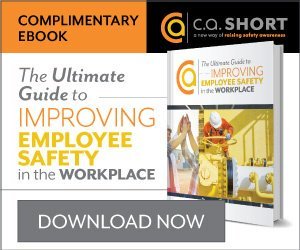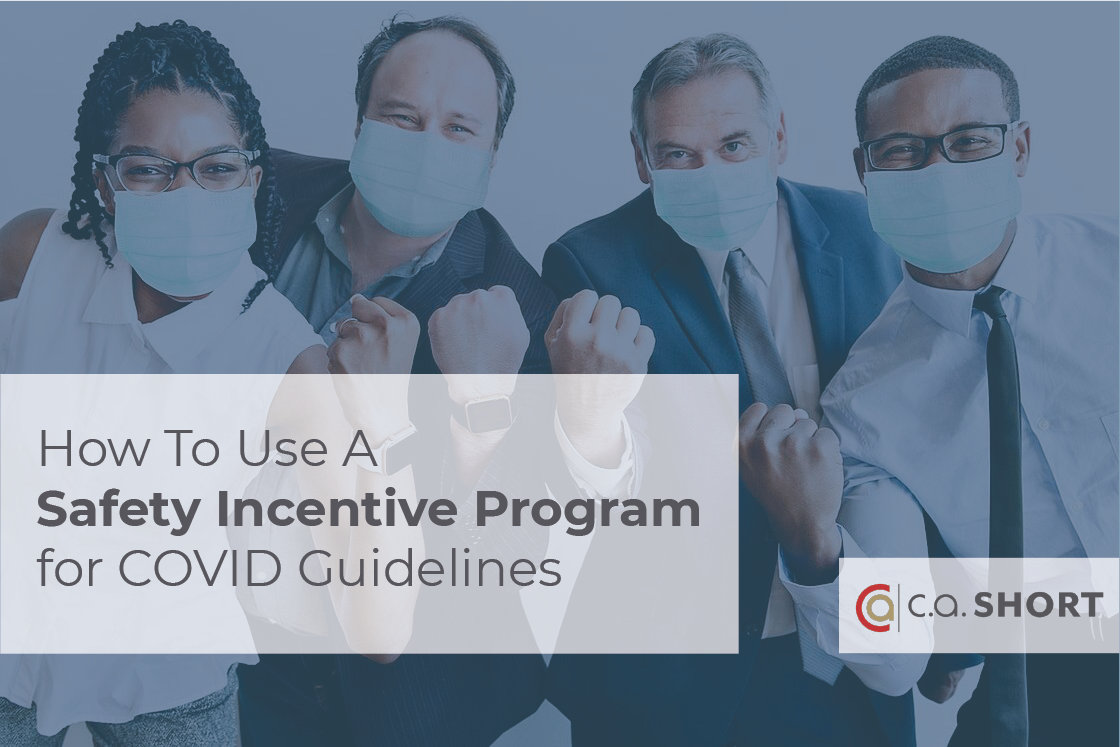On average, 2.8 out of 100 workers in the U.S are injured in workplace accidents every year. Overexertion, falls and slips, and contact with equipment played a role in lost work and production days.
No organization wants to have injuries, but where do you start to build a safety work culture? We’ve put together our list of 10 strategies to improve workplace safety and build a culture centered around employee health.
10 Ideas To Promote Safety in the Workplace
1. Employee Training
Comprehensive training is a must for preventing workplace injury. At the bare minimum you should ensure that all of your employees have access to – and have completed – all safety training for their positions. Specialized training may be needed for unique hazards, as well as leadership training for managers and supervisors.
Education and training provides employees with the knowledge needed to do their work safely and avoid creating hazards that could put themselves or others at risk. Training also helps to bring awareness to different situations and help employees learn how to identify, report, and control workplace hazards.
2. Make Training a Collaborative Effort
Another role of education and training, is to provide workers and managers with a greater understanding of the safety and health program itself so that they can contribute to its development and implementation.
Peer-to-peer training, on-the-job training, and worksite demonstrations can be effective in conveying safety concepts, ensuring understanding of hazards and their controls, and promoting good work practices. Give workers the ability to educate their peers on specific topics such as glove safety, proper eye-wear and hearing protection and first aid, depending on the hazards of your field. This will provide a collaborative experience, giving employees the chance to develop professionally and build leadership skills.
3. Create a Safety Incentive Program
Recognition is often a clear motivator for employees to achieve goals. By implementing an incentive-based reward program you can encourage employees to work towards a safe work environment and reward them for a decrease in accidents or hazards. Workplace safety programs require the perfect balance of reward, small gifts may not motivate them, whereas rewards that are too large may encourage workers to not report accidents.
Our OSHA-compliant safety incentive programs utilize a points based system for employees to receive rewards of their choosing. You can honor accomplishments, recognize employees, and connect your workforce easily. The software also captures historical data to develop predictive trends and prevent safety incidents before they occur.
4. Partner with Occupational Health and Safety Specialists
Consulting an occupational health expert is one of the best ways to gain insight into injury prevention. Specialists perform data analysis to learn about the work environments and the working procedures employees use.
An occupational health and safety specialist reads over and analyzes the policies your organization has in place and checks that they align with current industry regulations. The specialists can then create and deploy new job training programs that address your site’s main issues.
These programs can include best practices for using safety equipment, policies to prevent disease or injury, or general improvements for workers’ health.
5. Use of Compliant Labels and Signs
Labels and signs are a cheap and effective way to quickly communicate important information. They are usually simple and rely on pictures to detail hazards and proper procedures.
There are different types of signs including danger, warnings, and caution signs. By implementing compliant signage you can emphasize effective and clear visual communication that serve as reminders to even experienced workers. In turn you may experience fewer accidents and injuries, increased efficiency, and safe behavior throughout their facility.
ICYMI: What is LOTO (Lockout/Tagout)?
6. Promote a Culture of Wellness & Wellbeing
Promoting and supporting employee wellness will not only benefit your company, but ensure employees’ well-being is preserved.
Full-time employees spend a majority of their weekdays working on the job, it’s important to ensure that the environment around them is comfortable and secure.
Your workplace should have comprehensive first aid supplies available, as well as safe and clean work conditions, adequate lighting and protocols for heavy lifting.
A messy workplace can lead to unnecessary accidents.
- Make sure boxes are stacked safely and spills are cleaned up quickly.
- Conduct regular inspections to check for potential dangers such as tangled cords, messy floors, and disorganized tools.
All of these checks can make employees feel as if their health is valued and stimulate a positive working environment.
7. Regular Equipment Inspections
When conducting regular inspections it is best to also inspect workplace equipment. Quick checks should be performed daily before operating the equipment, as well as more detailed weekly inspections performed to reveal any equipment defects or malfunctions.
Extensive examinations should be performed every few months in order to maintain a balance between safety and work efficiency. Machine malfunctions are one of the most dangerous workplace hazards and neglecting to check equipment could endanger the lives of your workers.
You should always take inspections seriously in order to keep employees safe and healthy.
8. Encourage Breaks
To maintain productivity in the workplace you should always encourage employees to take breaks as they are scheduled. Regular breaks help employees to stay alert, and help them avoid stress and injuries. Stretch breaks are also an easy way to improve workplace efficiency and employee health. Sprains, strains, and tears, as well as soreness or pain are common workplace injuries. Taking five minutes to stretch can ease muscle tension and loosen joints, reducing the potential for repetitive motion injuries.
9. Be An Advocate
Being an advocate for employee safety is key to promoting a safe work environment. Many people often take safety for granted and many employers don’t think about potential dangers in the workplace until after an incident has occurred. By advocating safe and healthy workplaces, you can ensure that employees are well-prepared for hazardous situations and reducing risks.
Workplace safety does not rely on little fixes here and there, you have to consistently offer proactive guidance and comprehensive employee training programs to maintain a safe culture. Being an advocate will also showcase your commitment to your employees and their safety.
10. Have Regular Meetings and Discussions
As mentioned above, employee culture centered around safety requires you to consistently promote safety and employee well-being.
Having regular meetings and discussions can ensure you are prepared for unexpected situations and have a plan put in place. Regular meetings also give you the opportunity to review safety procedures and discuss prevention in a productive way.
You should also implement open dialogue within your company, making it easy for employees to come to you with health and safety concerns. Employees should be able to easily report hazards right away and bring up potential areas of concern that you may have overlooked.
This can help employees feel empowered and overall prevent issues company wide.



.png?width=70&name=Untitled%20design%20(11).png)


.jpg)
.png)


SHARE